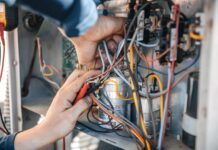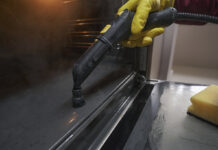The HVAC system is an integral part of any residential or commercial property. Responsible for maintaining the temperature of the room, any improvements in HVAC technology is eagerly implemented for bettter performance and energy efficiency. As it stands, there are many new developments that are all set to transform the world HVAC technology forever. Here are 7 such features/updates.
1. Smart HVAC Systems
Smart HVAC systems is a combination of software technology with the HVAC system to create a preemptive system that can detect and tackle timely repairs as well as maintenance. The main feature here is that it offers technicians the foresight to schedule a maintenance or repair immediately before it turns into a major problem.
- Connectivity and Automation
This feature is mainly achieved through the optimal usage of connectivity and automation. New HVAC system come embedded with sensors and programming that directly connect it to the Internet of Things (IoT). Therefore, it can not only monitor the status of a HVAC system in real-time, but it can also swap information with other associated devices. Hence, manufacturers and technicians can easily keep tabs on the performance of the system and any anomalies can be detected immediately. This technological shift has significantly improving the relationship between the service providers and their respective clientele.
2. Geothermal Heating and Cooling
Another emergent technology within the HVAC industry is the geothermal heat pump. Although this technology has been known for a while, its implementation is taking effect in recent years. They basically utilize the heat of the earth to power the HVAC system, turning the warm air into cool air or turning frigid air to something warm and comfortable during the colder months. Another major benefit of geothermal pumps is its versatility. Apart from contributing to the HVAC system, it can also be used to heat water, making it a sustainable and cost-effective solution to homeowners.
- Sustainable Energy Sources
Of course, while geothermal technology is environment-friendly, there are numerous other sustainable HVAC technologies that are emerging in the market. One excellent example is Chromasun, an Australia-based company which harnesses the power of solar and wind energy to power their air conditioning systems. This is supplemented by natural gas for maximum performance. The bottomline is that sustainable energy sources are becoming the norm in HVAC systems.
3. Ductless HVAC Systems
In conventional HVAC systems, ducting plays a major role. However, it is also a hassle to install and maintain, not to mention the inevitable leak in energy created by ductwork. This can be bypassed altogether with the advent of ductless HVAC systems. As the name suggests, this technology directly cools the room through vents instead of investing in expensive ductwork.
- Flexibility in Installation and Use
The biggest advantage of a ductless HVAC system is the flexibility when it comes to installation and usage. A great example of such technology is the ice-powered air conditioning system which are becoming popular. The technology is fairly simple, water is stored in a tank and is frozen into solid ice. This ice is directly connected to a structure that needs cooling, supplying cold air till the ice has melted completely. Once ice has dissipated, a conventional air conditioner is turned on to continue offering cool air. This technology can already offer air conditioning for upto six hours, making it a great supplemental system.
4. Air Purification Technologies
Air filtration is not a new concept in a HVAC system. Be it pleated filters or high-quality HEPA filters, their maintenance and care is a separate concern for HVAC technicians. However, instead of approximating the scheduled maintenance and lifespan of a filter, it’s condition can be monitored in real-time via sensors and IoT.
- Improving Indoor Air Quality
With a fall in air quality in urban areas, improving indoor air quality has become paramount. This has become even more relevant after the recent global pandemic. Hence, apart from regular filtration, care must be taken into improve the anti-microbial properties of the filter and the HVAC system. This is done in many units with the introduction of copper mesh. Copper is known widely for its antimicrobial properties, finding use in many sterilized environments. Hence, introduction of copper mesh as an additional filter in HVAC system has drastically improved the indoor air quality in numerous households.
5. HVAC Maintenance Innovations
With the help of Internet of Things (IoT), monitoring the HVAC systems for maintenance and repairs has become simpler. However, the duct work still needs to be cleaned and maintained for optimal function. This not only saves major repairs down the road, but also improves the efficiency of the HVAC system and lowers the energy bills. So how is this achieved? Via some advanced cleaning tools and techniques.
- Advanced Cleaning Tools And Techniques
While there have been numerous advancements in this regard, the introduction of duct cleaning skipper balls have been a real game changer. These are tiny, ball-like mechanical devices that push out highly pressurized air through their narrow opening. This pressurized air agitates the dust and debris clogged or gathered in the duct work and removes them quickly and effectively. Hence, skipper balls, also known as compressed air nozzles, are a major breakthrough in HVAC system maintenance in recent years.
6. Energy Analysis Software
Smart HVAC systems are a great way to save energy and money. However, how can they be made more effective in the long run? The answer is through energy analysis software. This is a surefire way to install the best HVAC system and using the best practices to ensure that the energy consumption is minimized. These types of software are designed to provide a cost/benefit analysis to manufacturers and technicians before undertaking a project.
This technology is specifically useful for intensive HVAC technologies such as motion-activated air conditioning. Although meant to turn on only when someone is present in the room, it can consume a lot of energy. Apart from helping HVAC technicians, energy analysis software also aids architects in optimizing their structural design. With this technology, they can plan a suitable design that aims to maximize the lifespan of the HVAC structure. Hence, its beneficial from both a monetary and ecological standpoint.
7. Mobile Friendly Technology
With mobile phones becoming very prevalent globally, their accessibility and reach can be used to optimize HVAC systems as well. Intergrating mobile friendly technology to the HVAC system has benefits for both the end-user and the service provider. For the user, mobile phones can be used to turn their air conditioners on or off. This can be especially useful for the motion-activated versions.
As for the professionals, they can have complete information about your system and its current stats at their fingertips. This will not only aid them with scheduling maintenance and basic repair, but it will also enable them to offer quality customer experience by integrating tasks such as invoicing on an app. In this way, mobile friendly technology such as apps can be used to monitor, operate and interact with the HVAC system while also smoothening the relationship between the customer and their respective technicians/HVAC support team.
Conclusion
To sum it up, these are some of the prevalent HVAC features that are transforming the future of this sector. Of course, this list is by no means exhaustive, with new technology or feature coming up every few years to further improve the system’s energy efficiency and handling.
















